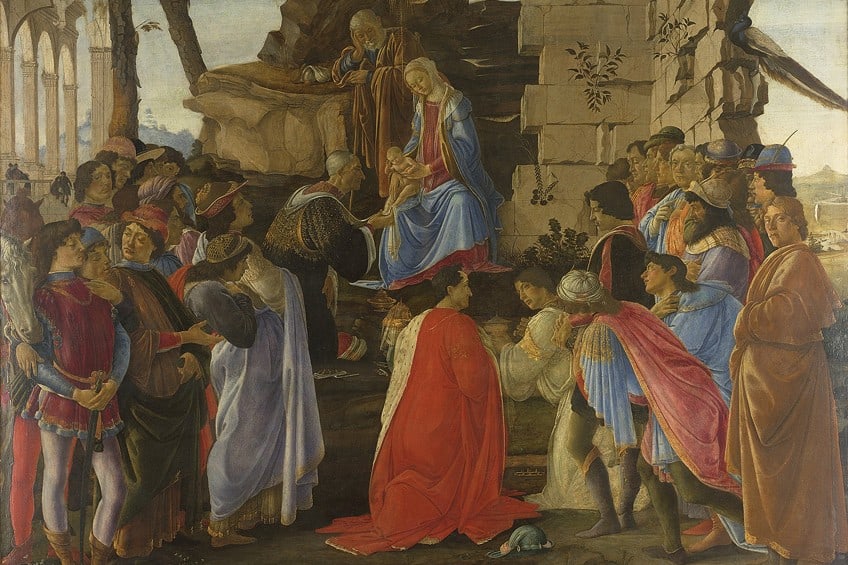Famous Renaissance Artists – Discover Artists of the Renaissance
This article is a sampling of the most famous artists from the period now known as the Renaissance; that is, more-or-less the 15th and 16th centuries in Europe. Notably, the fact that we even have the concept of famous Renaissance artists is thanks to Giorgio Vasari (1511–1574), a Tuscan painter and architect who published a compilation of artists’ biographies in 1550 (revised edition 1568). This article will explore the artworks and biographies of history’s most famous Renaissance artists.
Contents
Famous Renaissance Artists
It was a revolutionary idea to consider painters and sculptors as individuals, and he collected and conserved biographical details about Renaissance-period artists that would otherwise have been lost. Indeed, it was Vasari who coined the term rinascita, which means “rebirth”, identifying humanist Renaissance-period artists working in Italy. As such, Vasari was the first theorist to explain a revived interest in classical art emphasizing the representation of figures and movement in a naturalistic way, an aim that then spread northwards. Below, we have listed the most famous Renaissance artists of the period.
Sculptors From Florence
While painters are probably among the most famous names that have come down to us, the Renaissance began with sculpture, and then specifically in Florence, in Tuscany. It should be kept in mind, however, that although Florentine sculptors started looking at nature for inspiration, ironically this new aim was filtered through studying existing examples. In other words, artists did not turn directly to the natural world, but rather to ancient cultures in Italy.
Artistic expression shifted from late Gothic to early Renaissance as the direct result of the rediscovery of ancient Roman and Greek artifacts, buried for more than a millennium beneath medieval Italian soil.
Donatello di Niccolò di Betto Bardi (1386 – 1466)
| Commonly Known As | Donatello |
| Date of Birth | 1386 |
| Date of Death | 13 December 1466 |
| Place of Birth | Florence |
Although Vasari was somewhat uncertain about where to place Donatello in terms of the development of the Renaissance, this sculptor and painter surely has a real place at the very beginning. Certainly, Donatello was the first Renaissance-period artist to think of sculpture as an opportunity for individual portraiture, as it had been in the days of ancient Greece and Rome. Although he has always been less famous than the great triumvirate of Michelangelo, Leonardo, and Raphael, we now understand more about how his work reflects a personal development from late Gothic stylization to a new interest in naturalism.
Donatello brought to sculpture a characterization that was almost psychological.
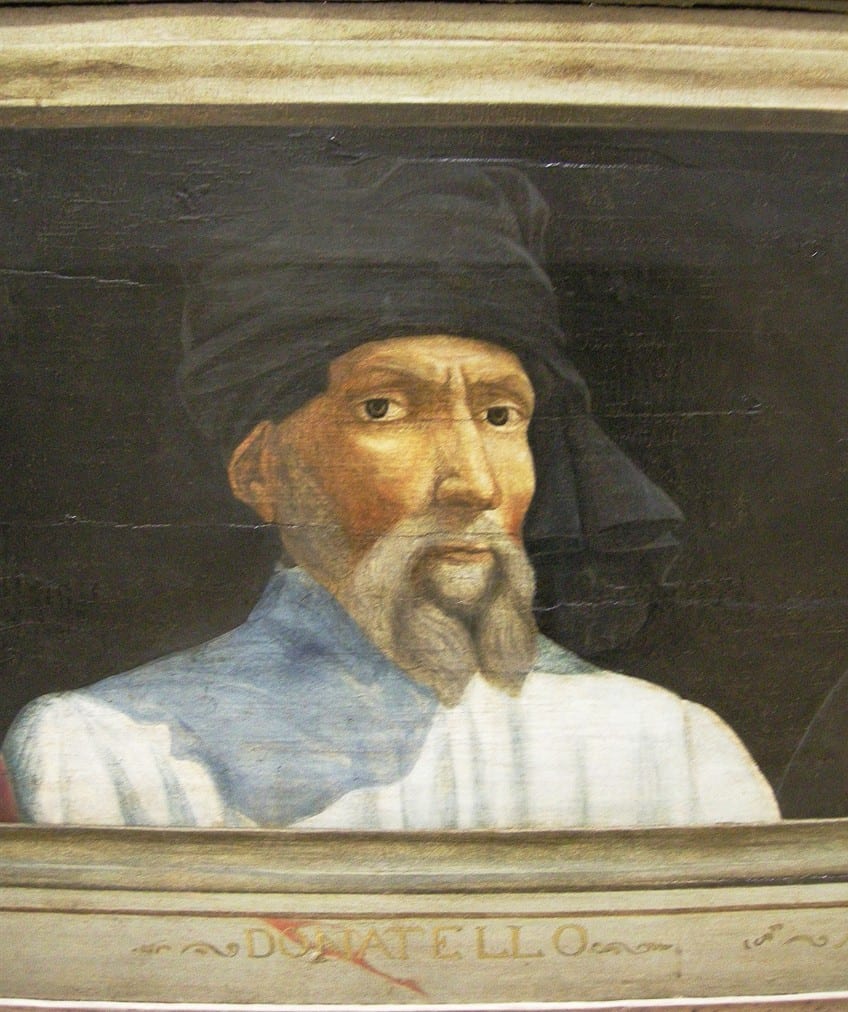
Indeed, in the early 1980s, when the creators of the Teenage Mutant Ninja Turtles decided to give their four superheroes Renaissance Italian names, they chose Donatello as their fourth superhero, turning this relatively unknown sculptor into another modern household name.
Significantly, Donatello’s bronze David (c. 1440s) is considered the first full-size male nude after antiquity and although it is similar in pose to his earlier David in marble (c. 1409), the Renaissance aims of naturalism and individualism have become much more evident.
Notably, his earlier marble David is still late Gothic in style, depicted with anonymous features, while the very slight contrapposto is far more restrained, and the egoism of the bronze David is absent. In the bronze David, the elaborate hat and boots, juxtaposed with the unabashed nakedness, are a certain mark of humanist sensibilities, the very idea of personal expression.
Michelangelo di Lodovico Buonarroti Simoni (1475 – 1564)
| Commonly Known As | Michelangelo |
| Date of Birth | 6 March 1475 |
| Date of Death | 18 February 1564 |
| Place of Birth | Caprese Michelangelo, Tuscany |
The link between classical sculpture and artists of the Renaissance is no more evident than in the sublime productions of the Tuscan Michelangelo, not least in the anecdotal account of his foray into forgery. At the end of the 15th century, it is said that finding himself without patrons or income, he made a sculpture with the subject of the sleeping cupid.
Then he buried it so that it could more quickly deteriorate. Having dug it up again, he sold it to a collector at a great profit as an ancient artifact.
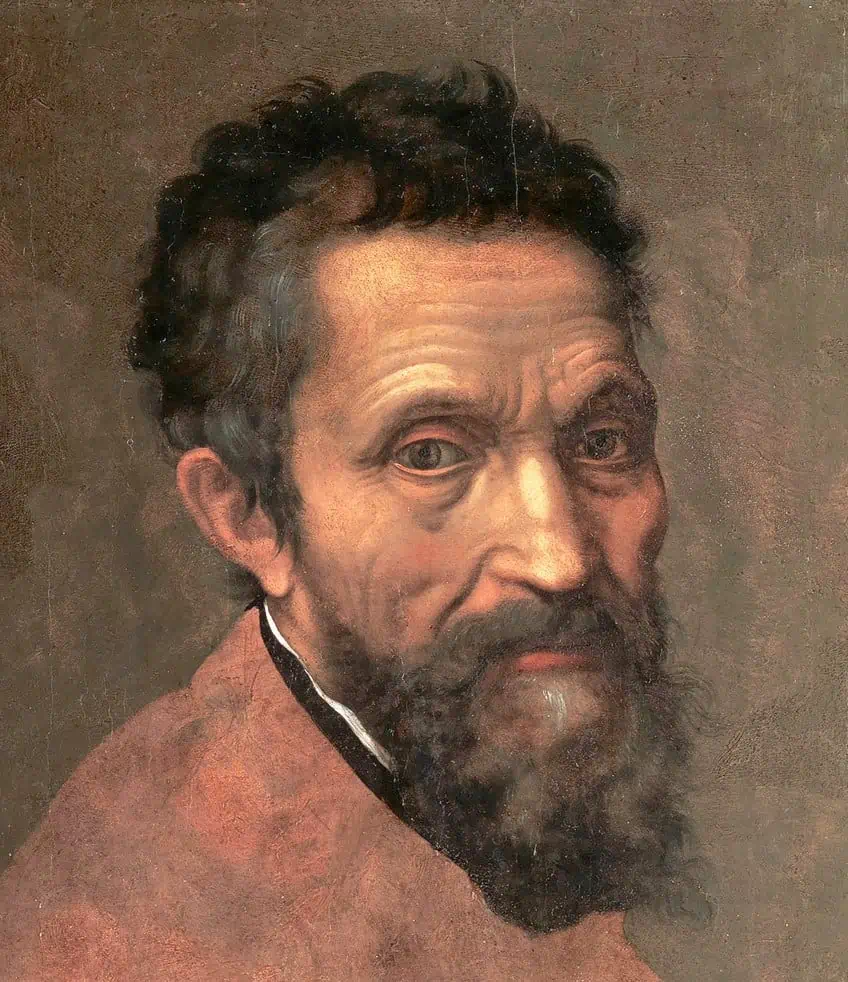
However, the buyer Raffaele Riario uncovered the scam. He chastened Michelangelo’s representative, but took the talented young Tuscan under his wing and invited him to Rome. Notably, the story might be simply apocryphal, nevertheless, the way it relates to a renewed obsession with the ancients is accurate. It is said Michelangelo aimed to reveal sculpture from the perfect slab of marble, studying only Nature and the Ancients.
Importantly, Michelangelo achieved a synthesis of Christian iconography with classical ideals, most particularly in his monumental David in Florence and the fabled Pietà in St Peter’s Basilica in Rome.
It should be kept in mind, however, that although we can see in his sculpture the greatest manifestation of what is now called the High Renaissance, he was nevertheless heir to Donatello who had already laid the foundations of this great style. Michelangelo was also a painter, most famously spending five tortuously difficult years delivering the painting of the Sistine Chapel for Pope Julius II. Moreover, like many famous Renaissance artists, Michelangelo was also an architect. Significantly, he spent many of the last years of his long life seeing to completion the rebuilding of Rome’s Basilica of St. Peter in a classical style.
Painters From Florence
The versatility of Tuscan artists meant many, like Michelangelo and Donatello, were both sculptors and painters. Another famous Florentine artist who straddled the disciplines was Leonardo da Vinci, although no extant sculpture has ever been definitively attributed to him. He was commissioned to sculpt, in bronze, a realistic and monumental classical-style horse and rider for Ludovico Sforza, but it was never completed.
As the Renaissance progressed, however, some artists chose to be purists, pursuing careers just as painters, and, indeed, Leonardo is listed here under painters, as that is what he became famous for.
Leonardo da Vinci (1452 – 1520)
| Commonly Known As | Leonardo da Vinci, or sometimes just Leonardo |
| Date of Birth | 15 April 1452 |
| Date of Death | 2 May 1519 |
| Place of Birth | Vinci, Tuscany |
Leonardo da Vinci is undoubtedly one of the most famous names in the history of Western art, although surprisingly he left very few artworks for the world to enjoy or for scholars to study, as maybe 20 in all have come down to us. Significantly, the most famous during his lifetime was undoubtedly the large fresco The Last Supper (1492 – 1498) in Milan, although he also created what is now probably the most famous Renaissance painting, the Mona Lisa (1505).
But it was truly in The Last Supper that he fulfilled the ideals of Renaissance humanism.
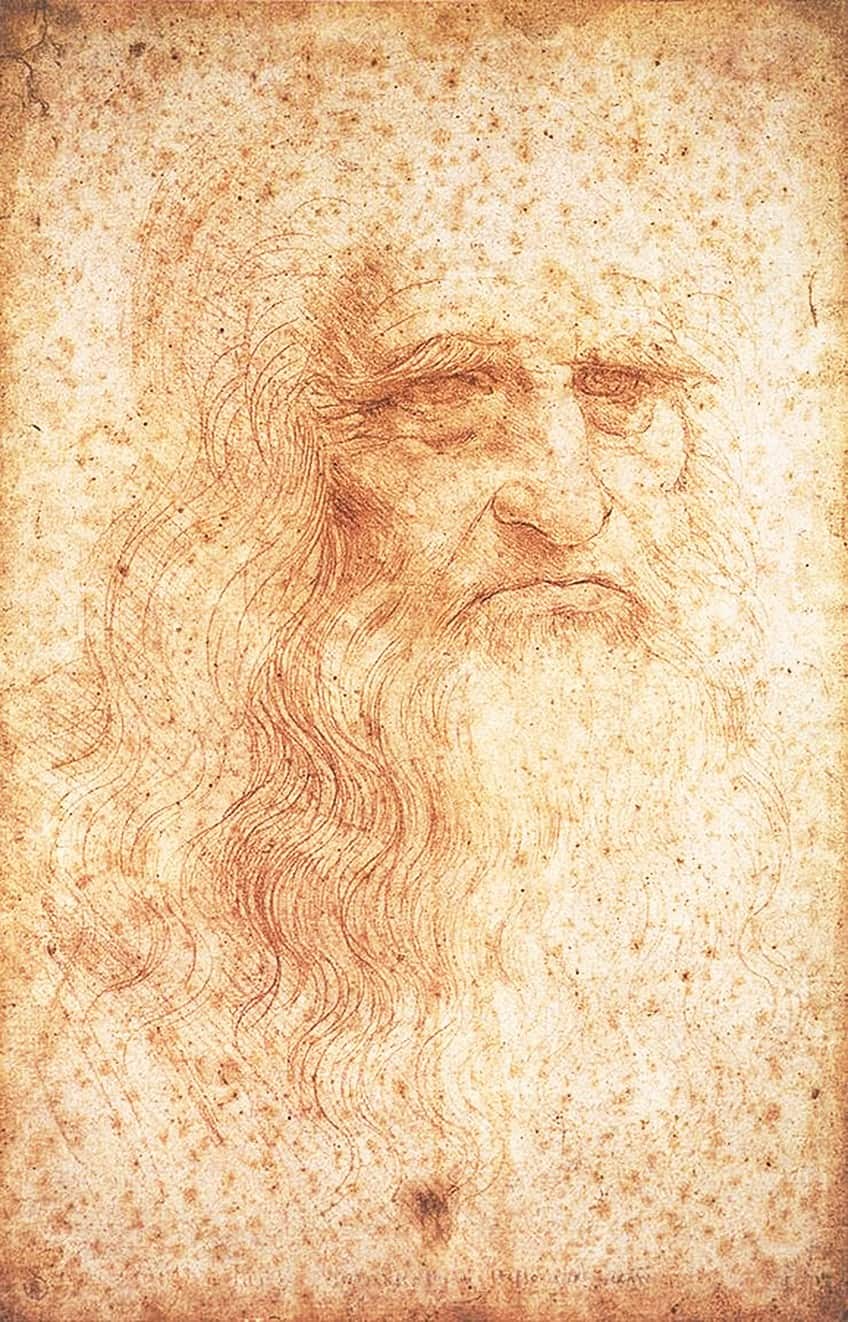
He emboldened the perspective lessons of Leon Battista Alberti (1404 – 1472), and formulated the spirit of Donatello in paint, masterfully applying the ideals of individualism. In The Last Supper, Leonardo da Vinci handles space with imaginative dexterity, captures intimate personal exchanges and physical movement with subtle mastery, and creates thirteen individual portrait expressions of human desire and emotion.
Da Vinci also reintroduced food painting, something that had intrigued the ancient Romans, and is expressed as intricate to the story rather than executed merely as wooden props to embellish a Christian story.
Sandro Botticelli (c. 1445 – 1510)
| Commonly Known As | Sandro Botticelli |
| Date of Birth | c. 1445 |
| Date of Death | 17 May 1510 |
| Place of Birth | Florence |
In the same way that Donatello was somewhat eclipsed by Michelangelo, Botticelli’s reputation as a painter is often subservient to Leonardo da Vinci’s, perhaps because, like Donatello, Botticelli also straddled the change from the formulaic style of late Medieval sensibilities toward Renaissance humanism.
Yet, in his Birth of Venus (c. 1484 – 1486), Botticelli nevertheless captures the symbolic expression of how sculptural forms of antiquity emerged as newly important for Italian artists of the Quattrocento.
Notably, it is said the figure of Venus on the scallop shell is a direct reference to the study of classical texts that, like unearthed sculptures, were central to the precepts of Renaissance humanist culture. Moreover, what is remarkable is the work’s size, an achievement of imagination that brought the benefits of an unfixed artwork to the long tradition of fresco. The slight gentle sway of the figure of Venus closely follows Donatello’s earlier David and is less classically robust than the representations of naked women in the works of Michelangelo that came after.
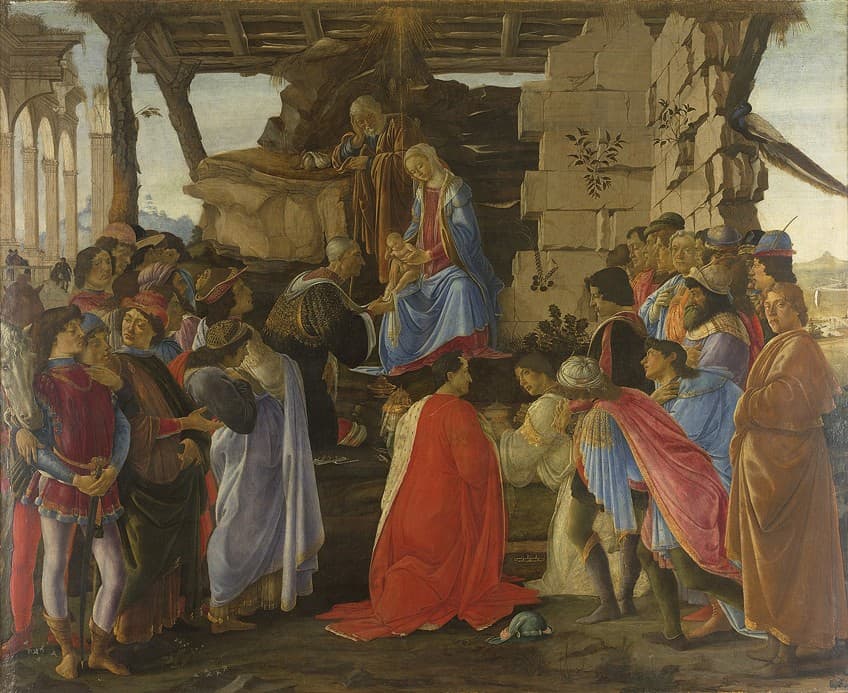
Botticelli also painted frescoes for the Sistine Chapel, but most people probably wouldn’t know this, as the importance of these has long been overshadowed by Michelangelo’s achievements. Towards the end of his life, Botticelli came under the influence of the firebrand anti-establishment priest Savonarola, which tempered his artistic trajectory.
He was, Vasari reports, also said to be a spendthrift whose last days were somewhat impecunious.
Yet, of all the Italian Renaissance painters Botticelli’s humanism was formed more from literature than literal, a proponent of Neoplatonism he was nevertheless also reportedly a great enthusiast of the works of the Medieval poet Dante Alighieri (1265 – 1321).
Famous Renaissance-Period Painters From Other Parts of Italy
All the artists cited above were either born in Florence or associated directly with Florence, although most also spent time in Rome, so the ideals of the Renaissance began to spread beyond Florence. Nevertheless, the younger Raphael came from Urbino directly to Florence, which is where he first encountered the intellectual trend of humanism.
He only then proceeded on to Rome. He was, therefore, particularly influenced by Leonardo.
Raffaello Sanzio da Urbino (1483 – 1520)
| Commonly Known As | Raphael |
| Date of Birth | 1483 |
| Date of Death | 6 April 1520 |
| Place of Birth | Urbino, Italy |
The tragically short-lived Raphael is one of the first Renaissance artists chronologically to shift our focus from Florence. Although from Urbino in the Marche of Italy, Raphael became a successful Renaissance painter in Rome. He was versatile, hardworking, and observant. Perhaps his most famous image is his self-portrait. Although we have portraits come down to us that report to be of Donatello, Michelangelo, and Leonardo in their hoary years, seen by others and seasoned by time and daily toil, these artists only dared to insert possible self-images hidden in multi-figured artworks.
Significantly, Raphael’s small self-portrait captures his own curious expression and is the depiction of the young artist reflecting on himself.
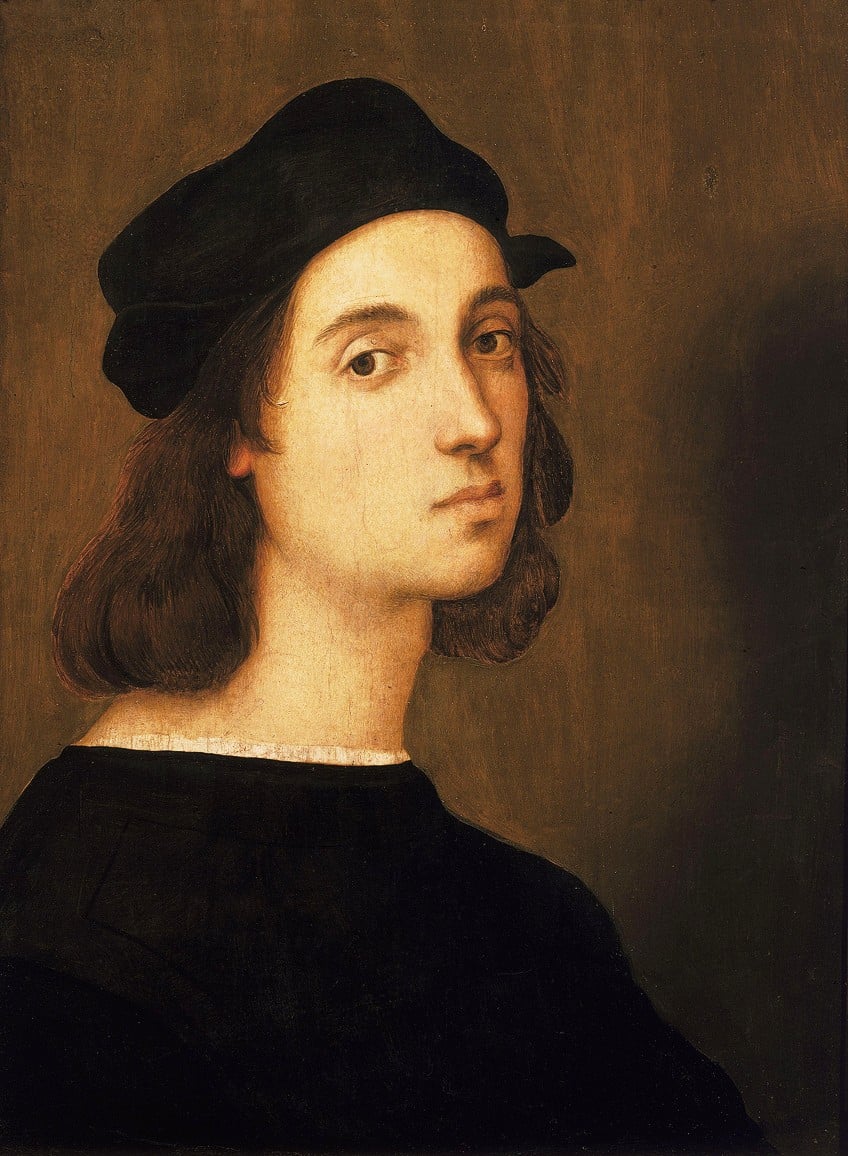
It follows the classical ideal of recording the personality of the sitter, although he turns this into a new interest in subjectivity. Raphael further demonstrated his talent for individualistic portraiture in his monumental fresco School of Athens (1511), notably also repeating a similar self-portrait and according to Vasari, grouping himself in this same work with Bramante and Zoroastro.
Giorgio Barbarelli da Castelfranco (c. 1477 – 1510)
| Commonly Known As | Michelangelo |
| Date of Birth | c. 1477 |
| Date of Death | 25 October 1510 |
| Place of Birth | Castelfranco, Veneto |
The equally short-lived Giorgione is another important famous Renaissance painter who, like Raphael, was not Florentine. Indeed, Giorgione was one of the first proponents of the Renaissance style in Venice, although it is said by Vasari that he met Leonardo da Vinci around 1500 when Leonardo was escaping Milan in the wake of the invading French forces. Although Giorgione followed the classical ideals of naturalism in his painting, he was also an expressive artist.
Notably, his most famous paintings reflect an almost genre-like interpretation of sometimes quite arcane subject matter, for example, The Tempest (c. 1508).
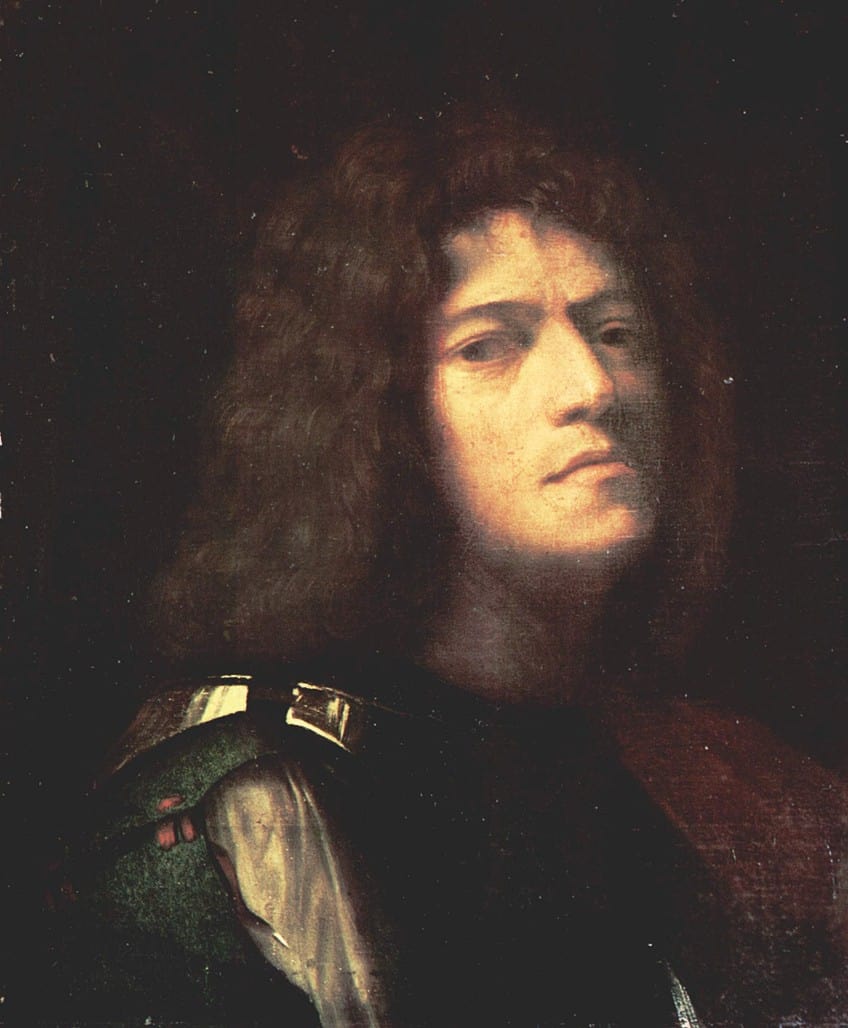
Pointedly, little is known about the subject matter of The Tempest, and art historians have spent much effort pondering the themes and intentions of the artist. However, the work can also be interpreted on a superficial level, as an early form of realism.
A peasant woman stops to feed her infant and a man chances upon them, shown looking on at the pair, while in the background a storm is brewing.
The work is a remarkably early example of landscape, which is seen also in the works of Leonardo da Vinci but is rather more successful, being less esoteric and obscure. Here, Giorgione has taken an interest in his surroundings, applying Alberti’s rules of perspective he then turns to nature for inspiration. It is also a fairly early Italian example of pure oil painting on canvas.
Tiziano Vecellio di Gregorio (c. 1490 – 1576)
| Commonly Known As | Titian |
| Date of Birth | c. 1490 |
| Date of Death | 27 August 1576 |
| Place of Birth | Pieve di Cadore, Veneto |
Titian was a Venetian and worked for Giorgione as an assistant. Certainly, at the beginning of his career, he was a proponent of the High Renaissance style in the north of Italy. Yet, of all the artists mentioned thus far, it was undoubtedly Titian who made the most impact on later important styles of European painting, particularly the Baroque.
Because Titian produced portraits of incredible force and tackled a variety of mythological and Christian subjects with energy and a unique handling of materials, he was a major influence on both Sir Peter Paul Rubens and Rembrandt.

Importantly, one of Titian’s early and most famous paintings, Sacred and Profane Love (1514) defines him as a High Renaissance artist who was a powerful exponent of humanism, while keeping in mind the restraints of an ideal classicism that was tempered by a prevailing Catholic doctrine and sensibility. However, aside from the obvious, one figure is clothed and the other shown nude, we have no real indication of why we should consider one representation sacred and the other profane.
Titian even mirrors the dramatic racy red color of the nude lady’s coverlet in the sleeve of the clothed lady. In other words, the sacred figure is not depicted in pure white.
Titian brings his personality to his paintings, which indeed was not entirely the aim of the Renaissance. Renaissance individualism was about imbuing the subject with reality, not inserting the self into the subject. Yet, paintings like Sacred and Profane Love reflect this famous Renaissance-period artist’s interest in his subjectivity as seen also in Raphael’s earlier self-portrait. Further, he continues to emulate Giorgione’s playful enigmatic topicality, which Titian turns into an expressive personal force.
Famous Renaissance Painters in Northern Europe
The manifestation of the ideals of the Renaissance in northern Europe formed from a complex relationship with the Italians, particularly the Florentines. The flow of artistic ideas was principally south to north, with the northern artists already during the 15th century feeling the attraction of Italy, rather than the other way around. However, Flemish artists certainly led the field in oil painting much earlier than the Florentines.
Indeed, although Leonardo was one of the first to use oil as a binder, he never did so exclusively on a painting until the Mona Lisa, that is, already in the 16th century.
Rogier van der Weyden (c. 1399 – 1464)
| Commonly Known As | Rogier van der Weyden |
| Date of Birth | c. 1399 |
| Date of Death | 18 June 1464 |
| Place of Birth | Tournai, Brussels |
Rogier van der Weyden had a lot of Italian patrons, and it is reported he went to Italy, specifically Rome, around 1450. However, the influence of Italian painting on Van Der Weyden’s painting style is said to be minimal, although he embraced the ideologies of the new aims of individualism that we now call the Renaissance. Van Der Weyden is known to have worked from live models, significantly studying nature first-hand and bringing to a late Gothic northern Netherlandish style a new emphasis on realism.
His Descent from the Cross (c. 1435), now in the Museo del Prado, is probably one of his most recognizable masterpieces.
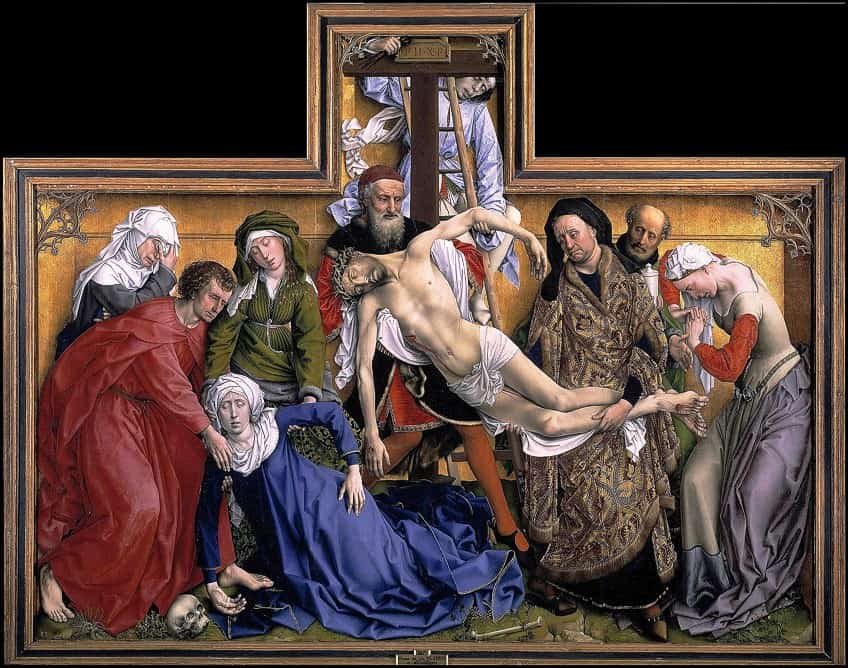
To put this painting into the perspective of famous Renaissance masterpieces, it was executed before Donatello’s bronze David. The composition is a tour de force of sculptured male nudity and vividly depicts realistic forms and materials.
The faces are done as individualistic portraits, summarizing the personalities and emotions of real people.
It may well be that one of these portraits belongs to the actual patron of the work, an idea of simulated realism juxtaposed with Christian iconography that came full circle in Botticelli’s Adoration of the Magi (c. 1475), peopled as it is with Medici family and friends. Notably, this was an idea also used around 1460 in the Palazzo Medici frescoes achieved by the less well-known Benozzo Gozzoli (1421 – 1497).
Jan van Eyck (c. 1390 – 1441)
| Commonly Known As | Jan van Eyck |
| Date of Birth | c. 1390 |
| Date of Death | 9 July 1441 |
| Place of Birth | Maaseik, Belgium |
Jan van Eyck is undoubtedly the most prominent name among famous Renaissance artists in northern Europe. He was an innovative painter and a significant representative of the aims of naturalism in this period. However, as the trend moves geographically northwards, the source of Florentine humanism, being the sculpture and learning of antiquity, becomes less evident.
He excels in realism more with objects than with people, and contemporary artist David Hockney (2006) wrote extensively about Van Eyck’s possible use of the camera obscura.
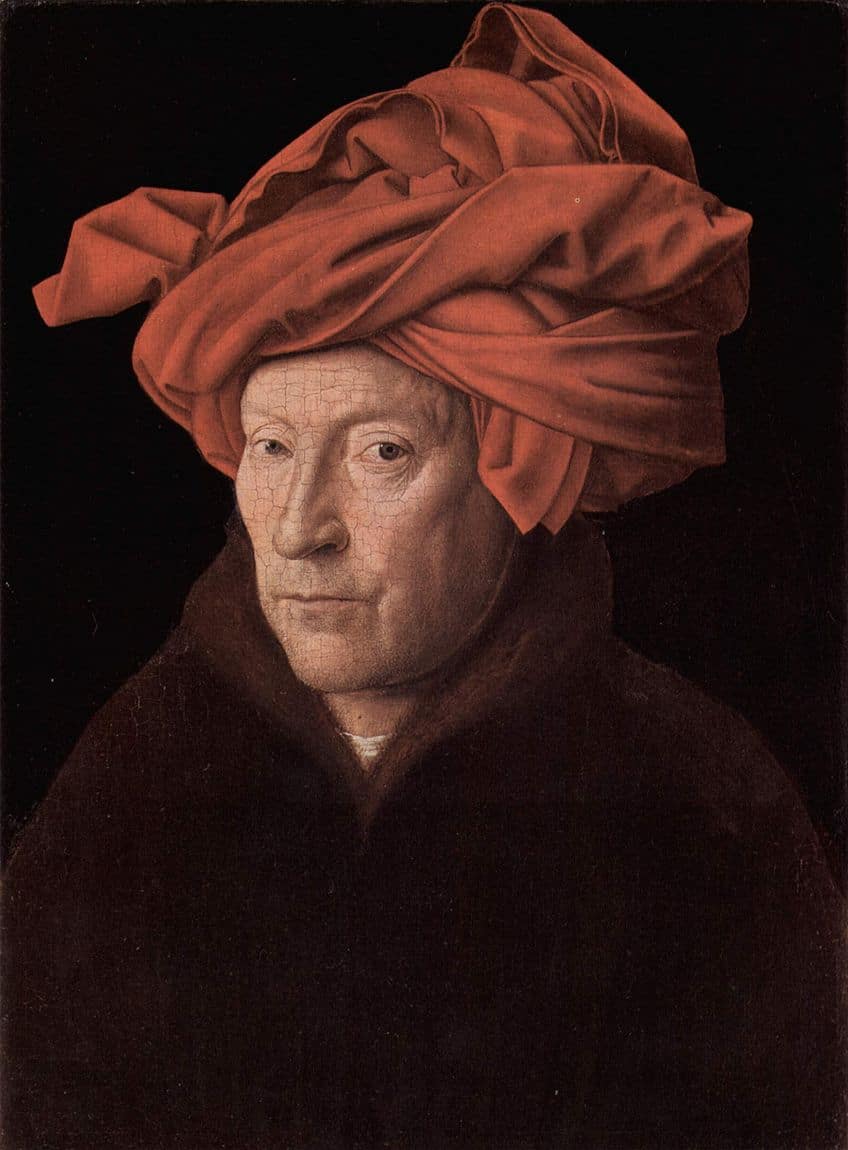
The Arnolfini Marriage Portrait (c. 1434) is one of Van Eyck’s most famous paintings. In his book Secret Knowledge (2004), David Hockney raised the issue of the perspective in the chandelier in The Arnolfini Marriage Portrait, which became the topic of hot debate in the first decade of this century.
Albrecht Dürer (c. 1471 – 1528)
| Commonly Known As | Albrecht Dürer |
| Date of Birth | 21 May 1471 |
| Date of Death | 6 April 1528 |
| Place of Birth | Nuremberg, Germany |
The final artist among this sample of famous Renaissance artists is the inimitable Albrecht Dürer, who is remembered mostly as an engraver, but who was also a sublime painter with a particular Germanic interpretation of Italian Renaissance humanism. He also paid attention to the tactile specificity of cloth and materials, as well as focusing on individual psychology and expression in his portraits.
Dürer’s massive depictions of Adam and Eve (c. 1507), now in the Museo del Prado, are extremely impressive, not least that he gives each individual their own separate panel, a startling innovation.

Many other European artists enjoyed relative fame both during the time of the Renaissance and after, although the period lacks diversity. There were no women artists in the Renaissance, and no men of color are acknowledged. However, there are many artists from the time that we would now consider as identifying as gay, which has become an important sub-discipline in the art historical research into famous Renaissance artists.
Frequently Asked Questions
Why Were the Florentine Artists the Most Famous Italian Artists in the Renaissance?
There were two reasons why Florentine artists were more famous than from any other region in Italy, certainly in the 15th century. First, the Council of Florence in 1435 brought many scholars from Constantinople, where classical texts had long been preserved among the Greeks and Arabs. There was immediately a newfound interest in individual learning now called humanism. Second, Florence was a wealthy state led by the Medici family, who poured vast sums of money into supporting and encouraging the arts.
Why Did Leonardo da Vinci Die in France?
Leonardo da Vinci left Rome for France in 1516, at the request of the French King Francis I. He had been living in Rome for three years but had never received a papal commission, as he was considered unreliable. So, while his people failed to fully appreciate his talents, further north in Europe, he was considered an incredible master painter.
Was Leonardo da Vinci More Famous Than Michelangelo in Their Lifetimes?
Undoubtedly, Leonardo da Vinci was less famous than Michelangelo, not least that Michelangelo excelled at both painting and sculpture. Indeed, Michelangelo was prodigiously hardworking as well as extremely long-lived. He was a great favorite at the Vatican and was commissioned in his last years to finish the project for the new Basilica of St Peter.
Jordan Anthony is a Cape Town-based film photographer, curator, and arts writer. She holds a Bachelor of Art in Fine Arts from the University of the Witwatersrand, Johannesburg, where she explored themes like healing, identity, dreams, and intuitive creation in her Contemporary art practice. Jordan has collaborated with various local art institutions, including the KZNSA Gallery in Durban, the Turbine Art Fair, and the Wits Art Museum. Her photography focuses on abstract color manipulations, portraiture, candid shots, and urban landscapes. She’s intrigued by philosophy, memory, and esotericism, drawing inspiration from Surrealism, Fluxus, and ancient civilizations, as well as childhood influences and found objects. Jordan is working for artfilemagazine since 2022 and writes blog posts about art history and photography.
Learn more about Jordan Anthony and about us.
Cite this Article
Jordan, Anthony, “Famous Renaissance Artists – Discover Artists of the Renaissance.” artfilemagazine – Your Online Art Source. October 26, 2022. URL: https://artfilemagazine.com/famous-renaissance-artists/
Anthony, J. (2022, 26 October). Famous Renaissance Artists – Discover Artists of the Renaissance. artfilemagazine – Your Online Art Source. https://artfilemagazine.com/famous-renaissance-artists/
Anthony, Jordan. “Famous Renaissance Artists – Discover Artists of the Renaissance.” artfilemagazine – Your Online Art Source, October 26, 2022. https://artfilemagazine.com/famous-renaissance-artists/.


